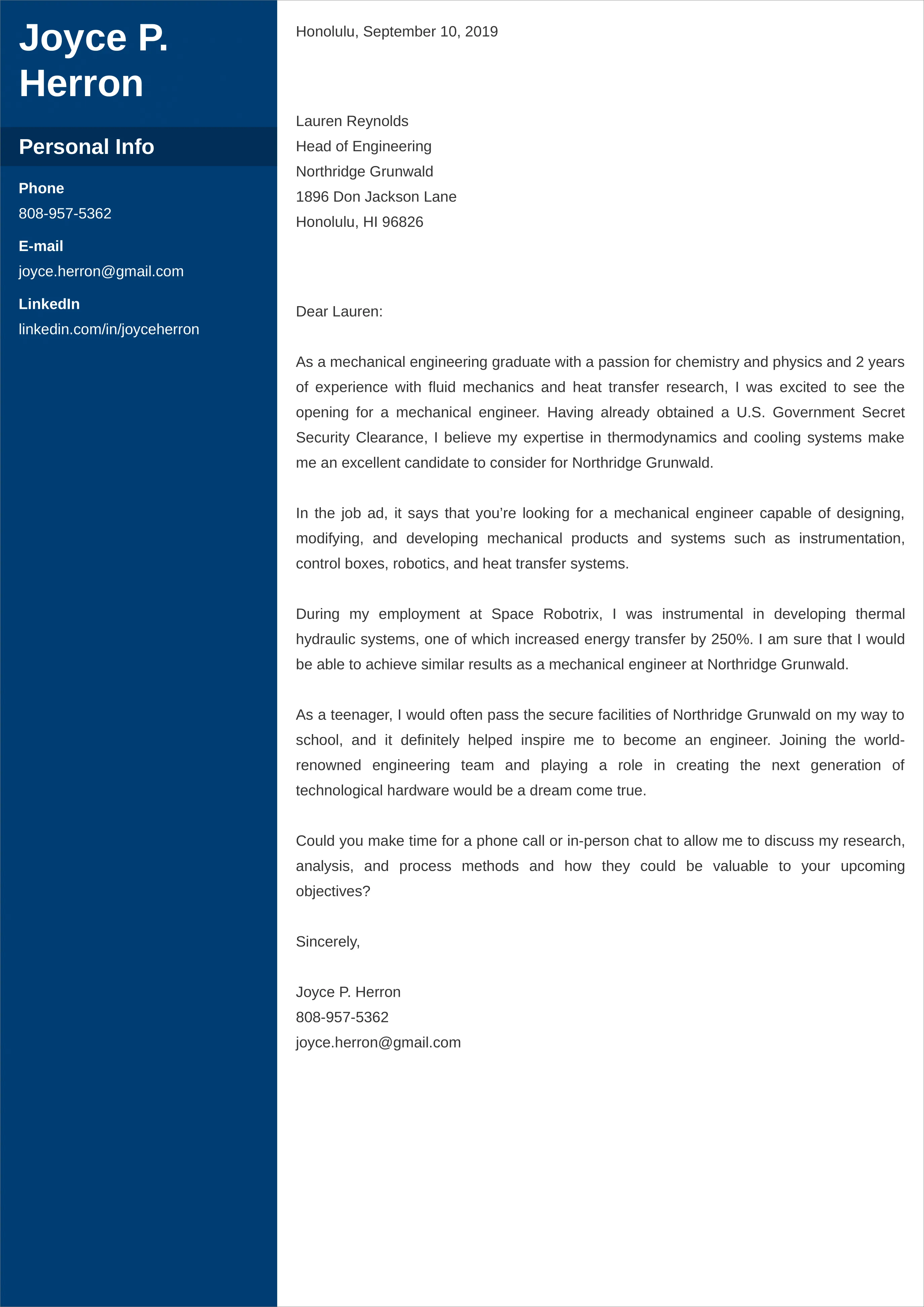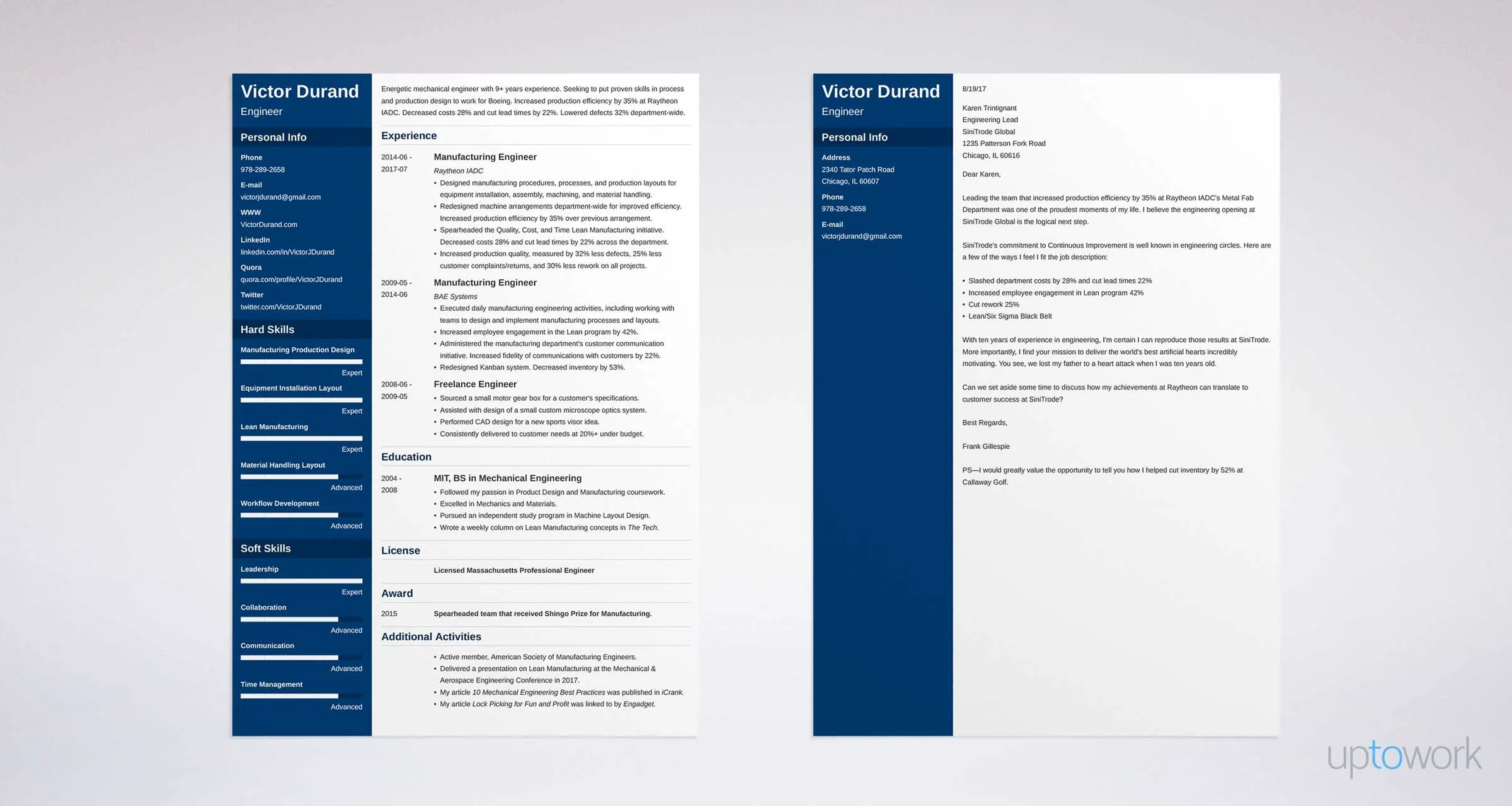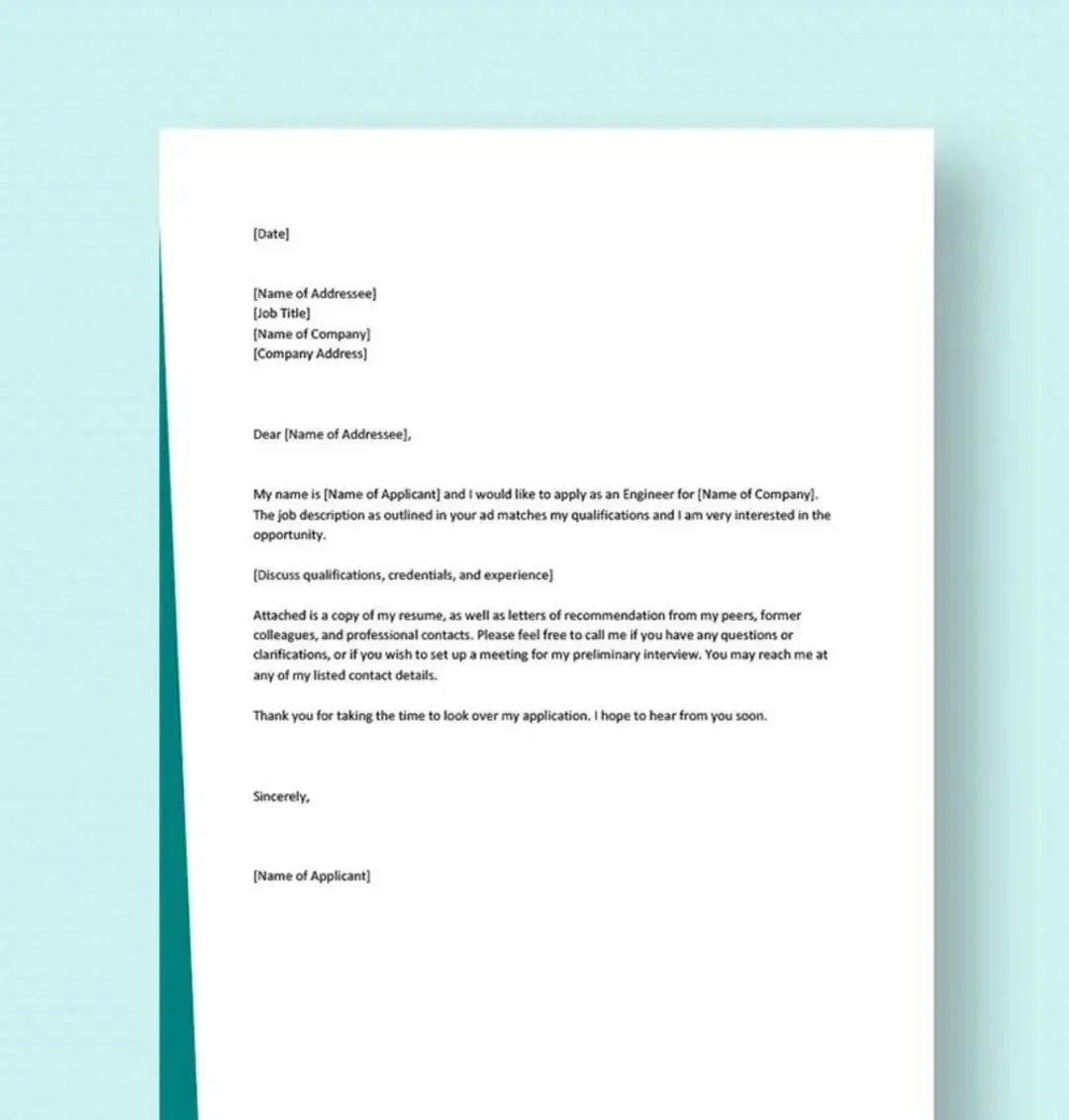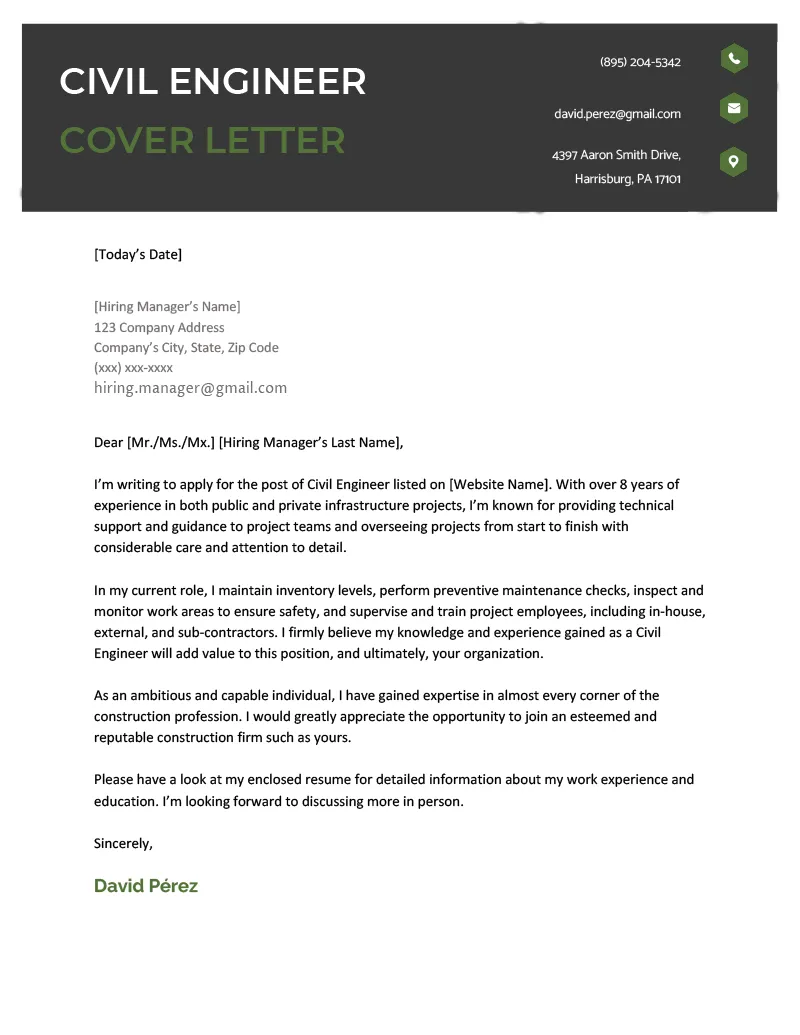Crafting an Engineering Cover Letter
An engineering cover letter is your first introduction to a potential employer, and it needs to make a strong, positive impression. It’s not just a summary of your resume; it’s an opportunity to showcase your personality, enthusiasm, and how your skills align with the specific job. The goal is to stand out from the crowd and convince the hiring manager that you are the right fit for the position. Remember, the best cover letters are tailored to each job application. Generic letters rarely make a lasting impact. Start by researching the company and the specific role to understand their needs and values.
Highlighting Your Skills and Experience
Your cover letter should clearly communicate your relevant skills and experience. Engineering roles often require a diverse skill set, including technical proficiency, problem-solving abilities, and soft skills like communication and teamwork. When highlighting your skills, focus on those mentioned in the job description. Use the STAR method (Situation, Task, Action, Result) to describe your accomplishments. This helps demonstrate how you applied your skills to achieve tangible results. The key is to provide specific examples that illustrate your capabilities and make your claims believable. Always tailor the skills you emphasize to match the requirements of the specific engineering position you are applying for.
Quantify Your Achievements

Numbers speak louder than words. Instead of simply stating what you did, quantify your achievements whenever possible. Use metrics to demonstrate the impact of your work. For example, instead of saying ‘Improved efficiency,’ say ‘Improved efficiency by 15%’. This provides concrete evidence of your abilities and gives the hiring manager a clear understanding of your value. Think about projects you’ve completed, problems you’ve solved, and any improvements you’ve implemented. Include specific figures related to cost savings, time reduction, or performance enhancements. Quantifiable achievements make your cover letter much more compelling and demonstrate your results-oriented approach.
Showcase Your Technical Skills
Engineering is fundamentally a technical field. Your cover letter should highlight your technical skills, including specific software, tools, and methodologies you’re proficient in. Be specific about your expertise. Mention programming languages, CAD software, simulation tools, or any other technical skills that are relevant to the role. If the job description mentions specific software or technologies, be sure to include those in your cover letter, especially if you have experience with them. Also, highlight certifications or licenses you have that are relevant to the position. This demonstrates your commitment to the field and your ability to meet industry standards. Technical skills are often the cornerstone of an engineer’s ability to perform their duties effectively.
Emphasize Problem-Solving Abilities
Engineers are, at their core, problem solvers. Your cover letter should demonstrate your ability to identify, analyze, and solve complex problems. Provide examples of challenging projects where you overcame obstacles and achieved successful outcomes. Describe the problem, the steps you took to solve it, and the results you achieved. Highlight your analytical thinking, your ability to troubleshoot, and your resourcefulness. Problem-solving skills are critical in engineering, and showcasing these abilities will set you apart from other applicants. Use the STAR method (Situation, Task, Action, Result) to give a clear picture of how you tackled problems.
Demonstrating Your Soft Skills

While technical skills are important, soft skills are equally crucial for success in engineering. Your cover letter should also highlight your ability to work with others, communicate effectively, and adapt to new challenges. Soft skills demonstrate your ability to collaborate, lead, and navigate the complexities of a professional environment. These skills often make the difference between a good engineer and a great one. By showcasing your soft skills, you demonstrate that you are not only technically proficient but also a well-rounded professional who can contribute effectively to a team.
Communication and Teamwork
Engineers often work in teams, so demonstrating strong communication and teamwork skills is essential. Your cover letter should highlight your ability to communicate technical information clearly, both verbally and in writing. Provide examples of projects where you collaborated with others, shared information, and contributed to a common goal. Mention your experience in presenting technical reports, leading meetings, or working with cross-functional teams. Effective communication and teamwork are critical for ensuring projects are completed successfully and efficiently. Showcase your ability to listen actively, share ideas, and resolve conflicts constructively.
Adaptability and Initiative
The engineering field is constantly evolving. Demonstrating adaptability and initiative is crucial. Your cover letter should highlight your ability to learn new technologies, adapt to changing project requirements, and take initiative in solving problems. Provide examples of times when you went above and beyond to complete a project or when you took the lead in a challenging situation. Show your willingness to embrace new challenges and your proactive approach to finding solutions. Highlighting your ability to adapt and take initiative shows employers that you are a resourceful and valuable asset to their team. Highlight instances where you taught yourself a new skill or took on extra responsibilities to further a project’s success.
Tailoring Your Cover Letter

A generic cover letter will not impress a hiring manager. The most effective cover letters are tailored to each job application. Start by carefully reading the job description and identifying the key skills and qualifications the employer is seeking. Then, customize your cover letter to address these specific requirements. Explain how your skills and experience match the job description and why you are a good fit for the role. By tailoring your cover letter, you show the employer that you understand their needs and are genuinely interested in the position. This also shows that you have taken the time to research the company and understand the specific requirements of the role. Highlighting your understanding of the company’s mission and how your experience aligns with their values makes a strong impression.
Research the Company
Before writing your cover letter, research the company to understand its mission, values, and current projects. This information will help you tailor your letter to the company’s specific needs. Visit their website, read their social media profiles, and check out any recent press releases. Identify any company achievements or goals that align with your own experience and skills. Use this information to demonstrate your interest in the company and explain why you want to work there. Mention specific projects or initiatives the company is involved in that resonate with you. This shows the hiring manager that you are truly interested in the position and have taken the time to understand the company’s goals.
Match Skills to the Job Description
The job description is your roadmap. Carefully analyze the job description and identify the key skills and qualifications required. Then, align your cover letter with these requirements. Highlight your relevant skills and experience and provide specific examples of how you have demonstrated these skills in the past. Use keywords from the job description throughout your cover letter. This helps demonstrate that you meet the employer’s needs and increases your chances of getting noticed. When you use the keywords from the job description, make sure they’re incorporated naturally into your writing. Do not simply list skills; instead, provide context and show how you have applied those skills in your previous experiences.
Formatting and Presentation

The format and presentation of your cover letter are crucial. A well-formatted and visually appealing cover letter demonstrates your attention to detail and professionalism. The layout should be clean and easy to read, with clear headings, concise paragraphs, and appropriate spacing. Choose a professional font and font size. Aim for a maximum of one page, and ensure the content is well-organized and easy to follow. A poorly formatted cover letter can reflect negatively on your abilities. Formatting affects readability and demonstrates your level of professionalism and your eye for detail.
Professional Layout and Design
Use a professional layout and design. Start with your contact information at the top, including your name, phone number, email address, and LinkedIn profile (if you have one). Address the hiring manager by name if possible. Use a clear and readable font, such as Times New Roman, Arial, or Calibri. Use a font size between 10 and 12 points. Keep paragraphs concise and use bullet points to highlight key information. Use headings and subheadings to organize your content and guide the reader. Maintain consistent spacing throughout the document. Proofread the document carefully for any errors in grammar or spelling. A clean and well-designed cover letter immediately makes a good impression.
Proofreading and Editing
Proofreading and editing are essential steps. Errors in grammar, spelling, or punctuation can make your cover letter appear unprofessional and can undermine your credibility. Always proofread your cover letter carefully before submitting it. Use spell-check and grammar-check tools, but don’t rely on them completely. Read your cover letter aloud to catch any awkward phrasing or errors. Ask a friend or colleague to review your cover letter. Fresh eyes can often catch mistakes you might miss. A polished and error-free cover letter demonstrates that you pay attention to detail and that you are a professional.
Common Mistakes to Avoid

Avoid these common mistakes to ensure your cover letter makes a positive impression. Common errors can quickly diminish your chances of landing an interview. Avoid these common mistakes and pay close attention to what not to do. Knowing these common errors and mistakes will make your cover letter stronger and increases the chances of getting hired. Paying attention to these areas will greatly improve your application.
Generic Cover Letters
Avoid using a generic cover letter. A generic cover letter that could be sent to any company or role is a major turn-off. Tailor your cover letter to each specific job application. Research the company and role and highlight the skills and experiences that are most relevant. Show that you understand the company’s needs and are genuinely interested in the position. Using a generic cover letter demonstrates a lack of interest and a lack of effort, and it will likely be discarded. Hiring managers can easily spot generic cover letters and will dismiss them, favoring applicants who have taken the time to tailor their application to the job.
Ignoring the Job Description
Ignoring the job description is another common mistake. Always carefully review the job description and tailor your cover letter to address the specific requirements. Highlight your skills and experience that match the job description and use the keywords provided. Ensure you address all the key qualifications and show how you meet the employer’s needs. Failing to address the specific requirements of the job will make it appear that you are not a good fit for the role and your application may be rejected. The job description is your guide, and ignoring it demonstrates that you haven’t taken the time to understand the position.
Closing Thoughts and Call to Action

In your closing paragraph, reiterate your interest in the position and the company. Express your enthusiasm for the opportunity and thank the hiring manager for their time and consideration. Include a clear call to action. For example, state that you are available for an interview at their earliest convenience and include your contact information. A strong closing leaves a lasting positive impression and increases the chances of getting a response. Make sure that your closing paragraph is strong and compelling and leaves no doubt in the hiring manager’s mind.
